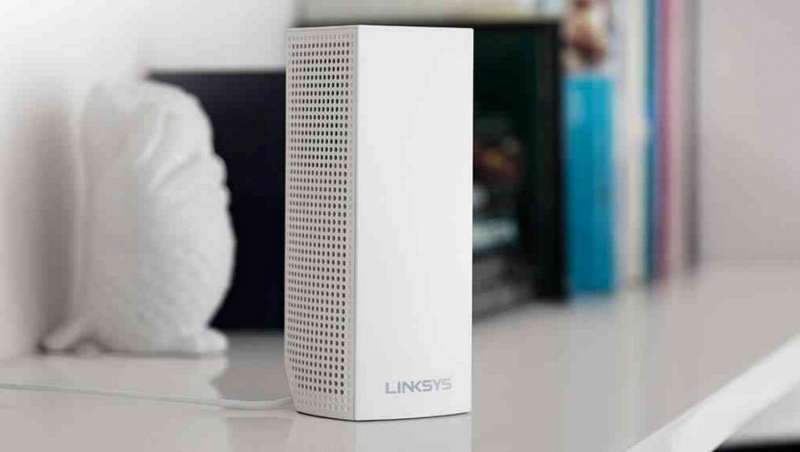Review: Wi-Fi systems for the home just keep getting better

It's interesting to watch when enterprise technology makes its way down to the consumer level.
Everyone is familiar with the way Wi-Fi works in an office or hospital or hotel - there's one network that's broadcast by multiple access points spread throughout the campus so that users can connect from any location (within reason).
That's different from how things have worked with home Wi-Fi, which is usually broadcast from a single access point.
Toward the end of 2016, Wi-Fi solutions with multiple access points began to hit the market.
I tested and reviewed the Eero and Ubiquiti Amplifi systems, which can cover large areas in your home.
Now I've been using the Velop system from Linksys with three access points ($499.99), and I'm pleased with the system's range.
Instead of taking it home, I decided to set up the Velop system at our office.
My house is quite compact, and a three-access-point mesh wireless system is overkill.
THREE CONFIGURATIONS
Velop comes in three configurations depending on how much area you need to cover.
A system with a single access point will set you back $199.99. A two-pack costs $349.99, and the pack of three costs $499.
The Velop is a tri-band router with three 2-by-2 radios (two uplink and two downlink).
There's one 2.4GHz network and two 5GHz networks. One of the 5GHz networks is for backhaul (internal communications between the nodes).
Each Velop is an AC2200 router; the 5GHz networks transfer data at up to 867 megabits per second, and the 2.4GHz network runs at speeds up to 400 Mbps.
Each Velop also has Bluetooth LE to make setup easier.
The first Velop needs to connect to your internet modem via Ethernet cable. To set it up, download and launch the Linksys app, and follow the installation steps on the phone.
Connect the Ethernet, plug in the Velop, and the app will walk you through the setup.
Once your first Velop is online, you'll be asked if you want to set up another.
The setup for all three access points finished without a problem. Once the app finds and configures the second and third Velop, it'll tell you if your placement is satisfactory. If your second or third nodes are too far from the first Velop, you'll be told to move them closer to another node.
The Velop is a true mesh network.
Here's how Linksys describes the modular mesh design: "Each node is built to connect with each other over Wi-Fi or wired Ethernet if present. They auto-configure to connect in multiple different mesh topologies. The nodes have the ability to choose the best path to route data between a client and the internet. In the event any node loses connection to another node, the remaining nodes will self-heal and re-establish Internet connection through other nodes in the network."
Linksys recommends a single Velop for homes up to 2,000 square feet, two nodes for homes up to 4,000 square feet, and three nodes for homes up to 6,000 square feet.
VELOP IN ACTION
At my office, I set up node 1 on my desk. Node 2 was placed one floor up and about 100 feet away. I put the third node also on the second floor out in our open lobby about 100 feet from node 2 and 200 feet from node 1.
With those three nodes, I was able to access the Wi-Fi from anywhere on our first and second floors and most of the third floor.
We have a pretty open floor plan without a ton of walls. Everyone's situation will be different, but I was really impressed with how far the network reached and how strong the signal was, even at great distances.
The Velop system can interact with Amazon's Alexa system so you can use your Echo or Echo Dot to turn on the guest network or ask the system its network name and password.
You configure the Velop system through the smartphone app or web interface.
Software features include parental controls for blocking websites by device and setting timed access by device.
You can set device prioritization, so your Apple TV will always have enough bandwidth to stream HD, even if your kids are all using their own devices.
The app is clean and well-designed. Finding and changing settings is easy.
The Velop system really feels like Linksys took its time and learned from the competition.
It's easy to set up, the app is nicely designed and useful, and the network was rock solid and fast.
Of course, $499 is a lot to spend on a Wi-Fi router system, but if you have a house of sufficient size, you've likely been disappointed with whatever you've tried so far and you're looking for the best (and not cheapest) solution.
The Linksys Velop is not the cheapest solution, but it's the best I've tried so far.
—-
Linksys Velop
Pros: Powerful and fast. Easy to set up. Great app.
Cons: Expensive.
Bottom line: If you need the coverage and speed, this is the system you want.
©2017 The Dallas Morning News
Distributed by Tribune Content Agency, LLC.



















